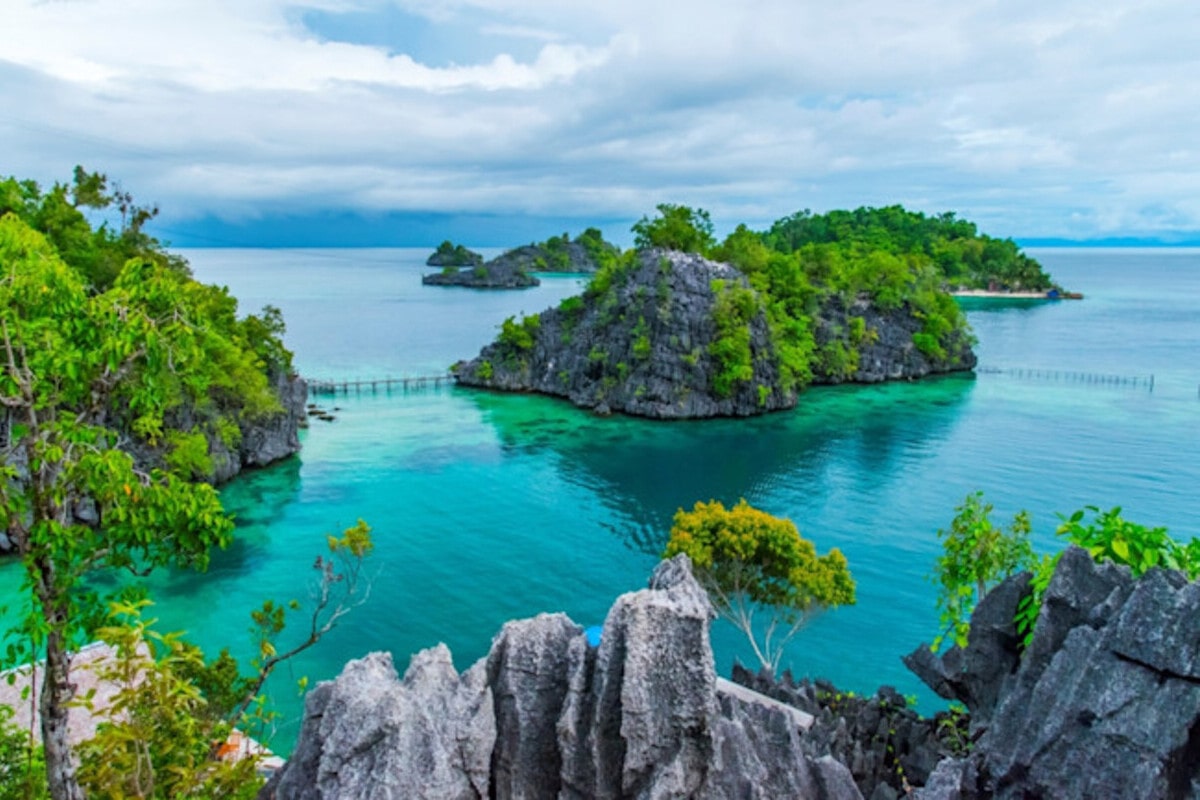Sulawesi is one of the most mysterious and unique islands of Indonesia, known for its unusual shape, rich nature and remarkable cultural heritage. It is a place where ancient traditions, rare animal species and stunning landscapes come together. The island remains relatively unknown to tourists, which has helped preserve its authenticity and natural beauty. In this article, you will discover fascinating and interesting facts about Sulawesi that you may not have known, offering a deeper understanding of this extraordinary island.
- Sulawesi has an exceptionally unusual shape that resembles the letter K or a spider with long legs. The island consists of four long peninsulas connected by a mountainous central region. This geography makes overland transportation difficult, so many residents rely on sea routes.
- It is one of Indonesia’s largest islands, ranking fourth in the country by land area. Sulawesi covers more than 174,000 square kilometers. It is larger than England but significantly less populated.
- The island is home to more than 18 million people belonging to dozens of ethnic groups. The most prominent among them are the Bugis, Makassarese, Toraja and Minahasa. Each group has its own languages, customs, traditional clothing and religious practices.
- The Toraja people, who live in the central highlands of Sulawesi, are famous for their unique funeral rituals. They keep the bodies of the deceased in special tombs for months, considering them still alive until the ceremonies are completed. Afterwards, elaborate funerals are held, which include the sacrifice of water buffalo.
- Sulawesi is one of the most important centers of biodiversity in Southeast Asia. Many species found on the island are endemic and cannot be seen anywhere else in the world. These include the babirusa, the anoa, the tonkangan and numerous unique bird species.
- The babirusa is a wild pig with large, upward-curving tusks that grow through its snout. Its strange appearance often leads to comparisons with creatures from fantasy stories. It lives only in the tropical forests of Sulawesi.
- The anoa is a dwarf buffalo and the smallest member of the bovine family in the world. It weighs no more than 150 kilograms and stands just about one meter tall at the shoulder. It is a solitary animal that prefers mountainous regions.
- Sulawesi has a complex geological history and lies at the convergence of several tectonic plates in the Wallace zone. As a result, the island experiences frequent earthquakes and volcanic activity. Some of its mountains are active volcanoes.
- The island’s coastline is extremely fragmented, forming many bays, fjords and inlets. It hosts some of the richest coral reefs in the world in terms of biodiversity. These waters are a paradise for scuba divers.
- Near the island lies the famous Bunaken Marine Park. It covers more than 75,000 hectares of coral reefs, lagoons and deep-sea slopes. Over 300 species of corals and more than 3,000 marine species inhabit its waters.
- The largest city on the island is Makassar, historically a maritime base for the Bugis people. They were known as brave sailors and traders who navigated to India, China and even Australia long before European explorers. Their traditional sailing vessels, called pinisi, are still built by hand today.
- In the northern part of Sulawesi, prehistoric cave paintings over 40,000 years old have been discovered. These are among the oldest known depictions of animals created by humans. They show that Sulawesi was inhabited since the prehistoric era.
- Coffee from Sulawesi is considered among the finest in the world due to the mountainous climate and volcanic soil. The Toraja variety is especially valued for its deep flavor with chocolate notes. This coffee is grown by hand on high-altitude plantations.
- Sulawesi has one of the lowest urbanization levels among Indonesia’s large islands. Most people are engaged in farming, fishing and traditional crafts. This has helped preserve their cultural lifestyle and environmental balance.
- The forests of Sulawesi are still home to species of plants and animals that remain unknown to science. Biologists regularly discover new endemic species. Many of these are at risk due to deforestation and require urgent protection.
- The island contains several large national parks, including Lore Lindu, Bogani Nani Wartabone and Tangkoko. These parks encompass mountains, rainforests, lakes and mangrove swamps. They are vital centers for scientific research and biodiversity conservation programs.
- The cuisine of Sulawesi features bold spices and frequent use of coconut, fish and banana leaves. Traditional dishes include kapura made from buffalo meat, spicy soups and fried insects. Culinary practices differ across ethnic groups.
- The roofs of traditional Toraja houses are shaped like boats, symbolizing the soul’s journey to the afterlife. They also reflect the ancestral connection to the sea. These homes, called tongkonan, are richly decorated with intricate patterns.
- Sulawesi is an important center for spice production, especially nutmeg, cloves and cinnamon. These products are exported from the island’s ports to countries in Asia and Europe. Spice trade has been a part of Sulawesi’s economy for centuries.
- Ecotourism is growing on the island, focused on nature preservation and cooperation with local communities. Visitors can stay in villages, take part in cultural events and explore unspoiled wilderness. This approach promotes sustainable development and benefits local residents.
Sulawesi is a land of incredible facts, exotic landscapes and cultural richness that continues to preserve its authentic spirit. Its uniqueness can be seen in every aspect, from the coastline’s shape to ancient burial rites, from rare species to prehistoric art. Every corner of the island holds a new discovery, and every encounter with locals brings fresh knowledge. These fascinating facts about Sulawesi show that true wonders are often closer than we think.





